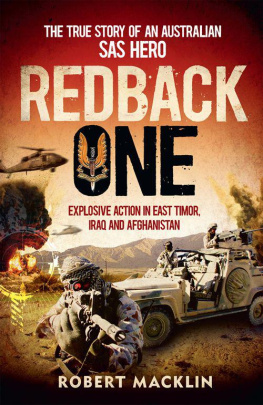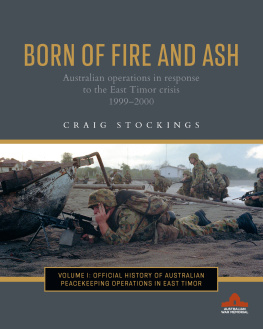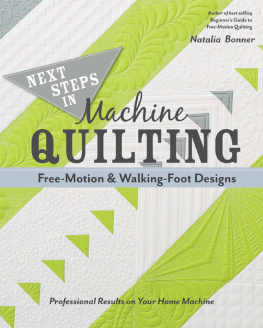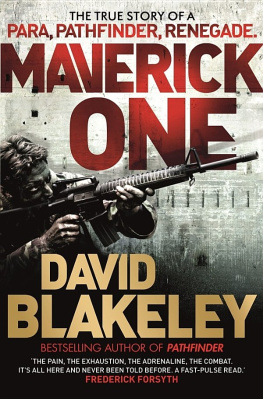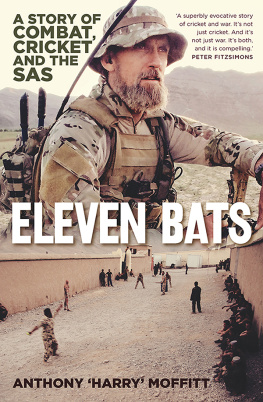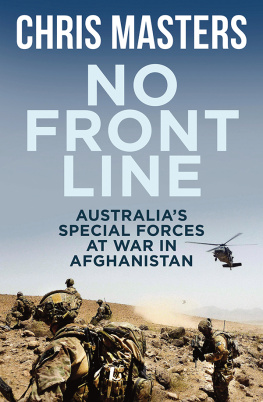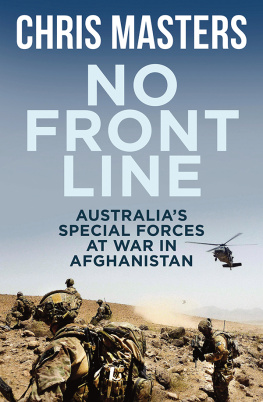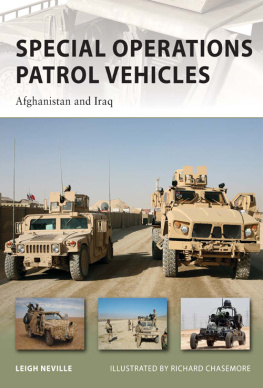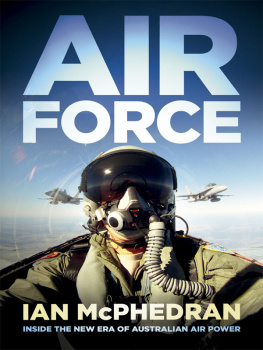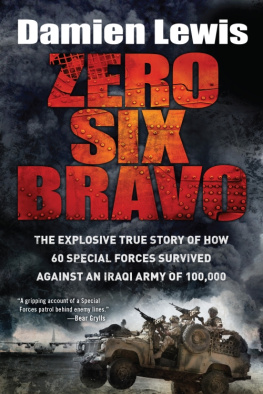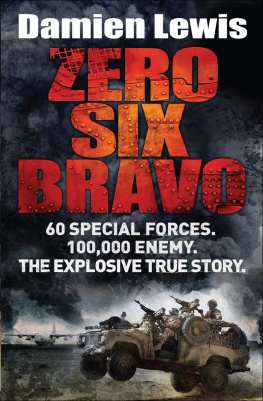

For Kenzie and Jonathan
CONTENTS
T his is the second in my series of SAS biographies, and like SAS Sniper it is written in the first person, where in effect the author and the subject become one. It is, to put it mildly, an unusual experience for someone who has never fired a shot at anything more threatening than a retreating kangaroo, and that in my distant jackarooing days. But both occasions have been extraordinarily satisfying and even pleasurable despite the exhausting process and the demanding deadlines.
Rob Maylor, the subject of SAS Sniper, became and remains a close mate. We are developing a couple of TV and movie projects that flow from the experience, though Rob has moved his family headquarters back to New Zealand whence he came.
Stuart (Nev) and Emily Bonner are very special, and I will always value the many hours we spent together digging into the past and unearthing the dramatic and powerful experiences that they both relished and endured. Stuarts were on the front lines of war while Emilys were in the exciting romance of their early days and the agonies of separation as she struggled to provide support for her man and their two great kids while battling her own demons. In situations like this the bonds between author and subject become indissoluble.
The drama is played out against the unique background of Australias Special Air Service Regiment (SASR) during its most demanding operational activity since Vietnam the first decade of the new century that began with East Timor then segued wildly to Afghanistan and Iraq. Stuart was among those who bore the brunt of it and, like many of his colleagues, he did not escape unharmed. The insidious effects disguised beneath the bland lettering PTSD are with him still. Post-traumatic stress disorder is a devils brew and it is not confined to the front-line soldier. It spills over into the family and at times it must seem like a life sentence.
In my view Stuart would be justified in becoming very angry about the circumstances that permitted the condition to take root. It is not a new phenomenon. What was shell shock in the First World War became combat fatigue in the second great conflict, and a kaleidoscope of syndromes in the Vietnam and Gulf wars. The army should have developed techniques to protect and prepare soldiers for its fierce onset. This is particularly true of the Special Forces. But on the contrary, as our account demonstrates, the beginnings of the condition might well be traced back to an aspect of the actual selection process of the regiment itself. However, it is not in Stuarts nature to feed an anger or to hold a grudge.
I am less forgiving. I found the vicious interrogation techniques employed on raw recruits hard to take. As far as I know, there has been no previous public account of this aspect of selection, despite several SASR-endorsed documentaries on the subject. Readers will make their own judgement, but I would have thought the time to engage in interrogation resistance would be better scheduled when the SAS operator was more experienced and less vulnerable to its inevitable emotional backlash.
There are other elements in the book that will break new ground and might well cause official discomfort. For example it has never previously been acknowledged in Australia that we invaded Iraq through a US-negotiated corridor from the Kingdom of Jordan; and we actually led the Coalition forces streaming across the desert while the US Air Force delivered its shock and awe bombardment of Baghdad. But we would not have included this unless it was easily obtainable in a five-minute trawl of the internet.
Similarly, we have been careful not to include any aspects of SAS operations that might break the rules of confidentiality or provide some future adversary with information that could put our soldiers in jeopardy. Nor have we touched upon those sensitive activities of the regiment that were outside Stuarts personal experience.
We have included the account albeit in fairly brief form of Emilys own struggles. The wives and loved ones of SAS operatives rarely get mentioned in the Boys Own approach of other books on the subject. I hope that this breakthrough will give other women the confidence to tell their stories, for it was never more true that, They also serve who only stand and wait.
My gratitude to both Stuart and Emily for their trust and confidence is unbounded. I must thank my own wife, Wendy, for her warmth and endurance, since writers (and their partners) also have their moments of stress. And thanks again to my publisher, Matthew Kelly, a stalwart comrade-in-arms in the literary trenches.
Robert Macklin
www.robertmacklin.com
I n the darkness my hand closed over the grip of the hunting knife, the blade sharpened and honed to kill. They the enemy were out there in the night. They were silently closing in. But I had the knife and I had the training 14 years in the SAS. I also had the experience tours in Afghanistan, East Timor, Bougainville and Iraq. I was ready for them.
I moved silently through the darkness to a place where I could get eyes on. That was the first rule of surveillance: get yourself into a position of overwatch where you can see what the enemy is up to. That way you can make your counter-moves to take him out before he knows whats hit him.
I gripped the knife. I was sweating. Luckily I knew the terrain, so I could move quietly and confidently. No need to wake the sleepers; not yet anyway. It was my responsibility. I would protect them, come what may.
I reached the overwatch position. From here I would have an unobstructed view. The silence was deafening. Nothing moved. But they were there. I could feel them. Would they come in a rush, or one at a time? Either way, I was on to them, every sense on high alert. I checked the time 0300 just when an attack could come, when we were off guard in that dream time when all the senses closed down and we were at our most vulnerable.
Cautiously I reached out and gently lowered the blinds, making a kind of porthole in the window. Nothing moved. No lights showed. No sound reached me beyond the pounding inside my chest and the soft thudding in my ears. I looked again at where they might be lurking. The street lamp made shadows; they could be hiding in any one of them.
I made my way quietly to the door and inched it open. Still nothing. I stepped out into the cool night air. I moved the knife to the other hand and dried the palm on my t-shirt. I gripped the knife again. I turned left into the shadows. I made a tour of the perimeter. Still nothing. I checked the lock on the back door, checked the windows were firmly closed, then returned to the front and climbed the couple of steps to the door. I turned back for one last look along Meridian Street, Hocking, on Perths northern suburban strip, so quiet you could hear a dog barking five clicks away.
Perth. Right, Perth; home; the other side of the bloody planet from that screwed up part of the world where I had spent much of the last few years, or East Timor, where the images drew me back to live again when I closed my eyes and tried to sleep. Perth, headquarters of the regiment, capital of the biggest richest state in Australia, a place of homecoming, of the family sleeping inside No. 22 Meridian Street my lovely wife Emily, beautiful little baby Kenzie both sleeping inside. Safe.
Nev. Get your head together. Je-sus! Theres nothing out there. Its all in your head, mate! I glanced across to the neighbours place. Poor bugger. He was moving out and I dont blame him. Not after that incident when smoke from his barbecue blew over the fence into our place and after a few beers I banged on his front door till he came out and I called him all sorts of things till he threw a punch and it was on. Blood everywhere. His. And next thing the cops arrived and told me I could be charged with serious assault, as he was in hospital with a head injury Get your head together, mate!
Next page
